Bangladesh's garment industry now a model for workplace safety
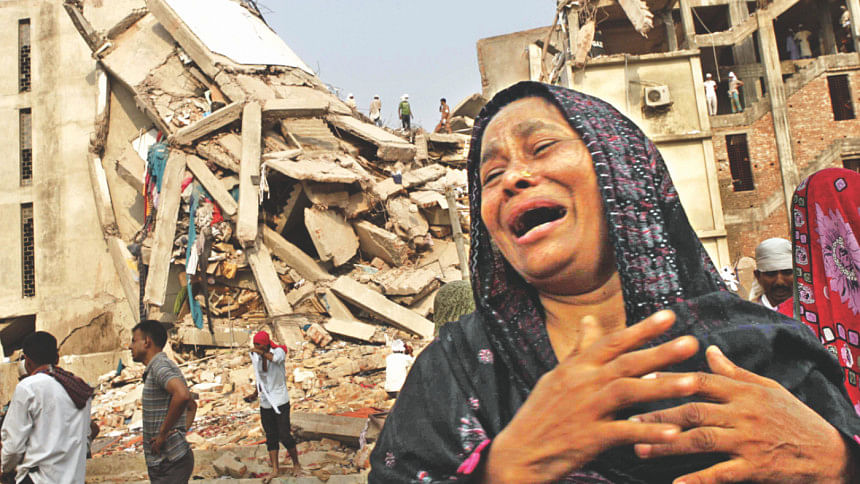
On this day five years ago, Rana Plaza collapsed, and with it went 1,138 lives and irrevocably changed those of thousands others. The event sent shockwaves around the globe, and awakened a sense of conscience amongst the Western governments and consumers. They came hard on the brands, whose constant demands for ever cheaper prices compelled many factory owners to cut corners on workplace safety. This jolted the buyers into action. More than 200 apparel brands from over 20 countries in Europe, North America, Asia and Australia signed up for the Accord on Fire and Building Safety in Bangladesh on May 15, 2013. It is a five-year, legally binding agreement between the brands and trade unions designed to build a safe and healthy Bangladeshi garment industry. A similar platform was formed by a group of 27 North American retailers on July 10, 2013. They went by the name Alliance for Bangladesh Worker Safety. Factory owners and the Bangladesh government also responded proactively. Despite limitations, owners have invested Tk 5-10 crore to remediate each factory and the government has strengthened its capacity to supervise about 5,000 factories, located mostly in Dhaka and Chittagong. Refayet Ullah Mirdha spoke with the Accord, Alliance, ILO, a trade union leader and the BGMEA president to comprehend the developments since the industrial disaster, which went to become one of the deadliest in history. All the stakeholders have categorically stated the factory conditions have improved significantly in the last five years. But, there are more to be done.

Rob Wayss
Executive director of Accord
The safety in Bangladesh's factories covered by the Accord has improved dramatically since 2013. Accord till date has covered 1,625 supplier factories. 88,443 safety hazards, in total, were identified in Accord's initial inspections of these factories. 74,386 of these safety hazards have been fixed, representing 84.1 percent of the safety hazards identified.
Because of the work of the Accord, the Accord signatories, the garment manufacturers, and the tripartite partners in Bangladesh, the garment industry in Bangladesh can make very strong, empirically-supported assertions that it is the safest in the developing world.
While 84.1 percent remediation is a significant achievement, there is a lot of work that remains to be done to correct the unfinished safety hazards. Accord inspected an additional 394 factories that have either closed, relocated, or were terminated for failure to remediate.
Training and supporting the work of the factory level safety committees is also a very important part of making and keeping factories safe.
The Accord safety committee and safety training programme has started in approximately 1,050 supplier factories. There is a significant amount of work remaining in this area of the Accord's work.
Maintenance and servicing of installed safety systems need to be practiced. Factory maintenance and discipline needs to be established and maintained such as not blocking exit paths, making sure fire doors are in proper state of repair, managing the amounts of weight/load and fire load inside the factory, regularly testing and servicing fire alarm systems, not overloading electrical distribution panels, making sure dust and lint accumulations do not occur on electrical wiring and circuitry.
There are now 140 companies that have demonstrated their commitment to maintaining long-term sourcing relationships with Bangladesh by signing the 2018 Transition Accord, giving them assurance that their factories' safety is monitored and outstanding safety hazards are remediated.
In most cases, the Accord is informed that the supplier factory will finance the remediation costs.
The are several examples additionally of brands that have pre-paid orders, committed to continuing or increase the volume of orders with the supplier, paying directly for remediation inputs, and/or offering direct loans to their suppliers to support timely remediation.
The Accord signatories have also distributed approximately $400,000 to supplier factories that have made good faith efforts to remediate, have expressed need for support, but who no longer have Accord signatory brands as customers in their factories.
This is direct support to the supplier where the supplier commits to completing all remediation through a combination of their resources and the direct grant support from the Accord.

Jim Moriarty
Executive director of Alliance
We have seen remarkable progress in workplace safety over the past five years.
The 1.2 million women and men who earn a living in Alliance factories now work in buildings that are structurally sound, free of fire hazards and equipped with modern electrical systems, sprinklers and fire doors.
Also, more than 1.5 million workers and factory security guards have received fire safety and emergency evacuation training and another 1.5 million workers have access to a 24-hour helpline, allowing them to report safety concerns anonymously and without fear of retribution.
All of the 664 currently active Alliance factories are much safer than they were in 2013. Nearly 90 percent of remediation is complete, including 84 percent of items most critical to life safety, and we fully expect to complete our remaining remediation work this year.
Through our efforts, the Alliance has helped transform an industry once repeatedly touched by tragedy into one cited as a model for other countries.
The enormous gains we have made in factory safety have bolstered Bangladesh's position as a key supplier of garments for brands around the world.
Buyers are more confident sourcing from Bangladesh because their products are produced in safe factories where workers are empowered to voice their concerns.
The Alliance's experience demonstrates that safety is not just good for the well-being of workers -- it is also good for business.
But, there is still work to be done to ensure the progress we have made in improving factory safety and training and empowering workers is sustained over the long-term.
We believe that to instil a culture of safety in Bangladesh, efforts must be owned and led locally.
To this end, the Alliance is forming an agreement with local stakeholders to establish an independent and credible safety monitoring organisation to carry on our factory monitoring, worker training and 24-hour worker helpline initiatives.
Our work represents a starting line and not the finish line. It is the factories that must maintain these standards moving forward. Our members remain committed to sourcing from factories that maintain high safety standards -- making sustaining this ecosystem a top priority for all.
It is certainly possible that a national body like DIFE/RCC could eventually carry forward the Alliance's legacy.
The Alliance is working collaboratively with both the RCC and the government of Bangladesh and views them as key partners in the effort to build a safe garment industry in Bangladesh. As we work with them and other partners to increase capacity, the Alliance needs to enable the smooth and uninterrupted transition of activities after 2018.

Gagan Rajbhandari
Officer in charge of ILO Dhaka office
Workplace safety in the garment industry has certainly improved five years on from the Rana Plaza disaster.
The inspection of all exporting garment factories for structural, fire and electrical safety by the Accord, Alliance and the government and the subsequent closure of some 40 factories that posed immediate danger to workers were major achievements.
There is still some way to go to complete the remediation works of garment factories and to instil a culture and practice of occupational safety and health.
It is therefore vital that all stakeholders -- the government, industry, buyers and workers -- help ensure that the momentum for change created by the Rana Plaza disaster continues.
More importantly, unless workers' voices are heard there can be no true safety.
Trade unions, safety committees and elected participation committees all have a role to play in this regard. Their formation and capacity needs to be supported as should the increased involvement of women at all levels.
The key issue relating to compliance is to build up longer-term regulatory capacity to change the landscape of safety in Bangladesh. In this respect, the Department of Inspections for Factories and Establishments has been transformed over the past five years.
It now has more budget, staff and capacity and is able to carry out its regulatory mandate to oversee compliance far more effectively, not only in the garment industry but all industrial sectors.
Meanwhile, through the ILO/IFC Better Work programme we are showing how increased safety and compliance can help boost productivity and competitiveness rather than hinder it.
The establishment of the Remediation Coordination Cell (RCC) that brings together a number of key regulators to oversee the remediation process in National Initiative factories was a major step towards building long-term regulatory capacity.
Ultimately, it will evolve into an industrial safety agency that is credible, trustworthy and can effectively oversee factory safety once Accord and Alliance as well as donor support ends.

Siddiqur Rahman
President of BGMEA
Tremendous improvements have been achieved in workplace safety since the Rana Plana tragedy, particularly in the area of building, fire and electrical safety. The combined efforts of 3 safety initiatives have so far inspected 3,978 factories for building, fire and electrical safety.
The progress of remediation is phenomenal: around 90 percent. We hope to complete the remaining work by this year.
The government, manufacturers, buyers, ILO and development organisations have set an unprecedented example in joining forces and taken all-out efforts in the area of legal and administrative measures, and carried out practical activities to ensure safety in all factories.
This is a commendable progress, which has made Bangladesh one of the safest apparel producing countries in the world.
After the Rana Plaza incident there has been a paradigm shift in the mindset of our entrepreneurs. Bangladesh is now taking the lead in green industrialisation. We have 67 factories with LEED certification from the USGBC, 14 of which are platinum. Seven of the world's 10 highest ranking LEED certified factories are located in Bangladesh.
Some 280 factories are in the pipeline for certification. This is a clear reflection of the fact that our entrepreneurs are attaching due importance in their investments on issues that are emerging as critical issues for future business context.
Having said that, we also expect our buyers to consider the issues of responsible manufacturing and responsible sourcing when it comes to pricing.

Nazma Akter
President of Sammilito Garment Sramik Federation
Nazma Akter, president of Sammilito Garment Sramik Federation
Safety has increased in the buildings -- it is now to the satisfaction of workers.
But the workers are dissatisfied on other grounds: working conditions -- by way of working hours, maternity leave and benefits, retirement benefits and day care centres for children of the female workers -- and wages have not improved significantly.
Proactive trade unions can help workers get their due rights, including safety of their lives in factories.
According to the labour law, participation of 30 percent workers is required for forming a trade union, which we think is a big constraint. Besides, huge number of documents is needed to form a trade union.
Currently, 625 factories have registration for unions, but almost 50 percent of these factories have closed. Six factories have collective bargaining agents, which was a big achievement for us in 2017.

 For all latest news, follow The Daily Star's Google News channel.
For all latest news, follow The Daily Star's Google News channel. 


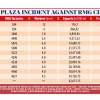
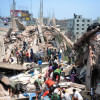
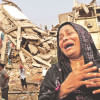
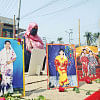


Comments